Why are data stories PR gold?
Part 1: How to make a PR data story with zero budget
In 30 seconds:
· Every brand wants a shedload of earned coverage, all of the time. But it’s harder and harder to standout in the inbox of a journo.
· We have access to so much data, and even better, so much of it is free.
· In this helpful series, we go through all the ways you can use trends, and numbers, to create newsworthy stories for your brand.
Why are data stories PR gold?
It’s not data, per se, that makes a great story. It’s because data provides a way to show change, or difference.
To show a comparison, usually in the dimension of:
Time:
it was like this, it’s now like this, it’s going to be like this in…
Geography:
it’s like this here, it’s like this there
Demography:
it’s like this for this age / socio group, compared to that age / socio group
And showing change is pretty-much the definition of news.
Adding cause and correlation gives story.
The alchemy – story gold from base metals
Our formula has three parts (the base metals):
And those three parts are fused together with the real alchemy – ‘Creative Force-Fitting’ (something that can be natural for some, needs practice for others, but doesn’t require mystical, magical powers).
The Popular Culture Moment
It's the topical hook that makes the story news-relevant. It’s often predictable – many of them are recurring – and it’s something that the media will already be talking about. But they want MORE. More angles, more originality, more, more, more.
It’s the new series of The Traitors, GBBO, I’m A Celeb, Race Across The World.
It’s Wimbledon and the Olympics (yeah, the sports-event-that-must-not-be-named).
It’s the Met Gala and the BAFTAs. It’s the Eras Tour and Glastonbury.
But it’s not just these, it’s COP29, it’s The Budget, and the State Opening of Parliament.
(Awareness Days are a back-stop, they’re rarely something that news desks are eagerly poised to publish).
Sure, not all culture moments are as predictable. (The toxic green of brat summer?)
We’ll share more in Part 2 about how to plan, and what opportunities for stories these moments offer.
Brand Topics and Keywords
These might seem obvious, and you’ve certainly got a list of keywords on hand for Digi PR findability storyplanning.
Brand topics will overlap, but remember that brands’ positioning and ‘white space’ growth takes their relevance into territories outside of what people are searching for.
We’ll show one way to build out these topics, in Part 3.
The Open Data Set(s)
So much data. Too much data?
There are some trends-tracker ones that need to be part of a regular, daily diet of vigilance – like Exploding Topics.
There are others, that are worth signing up to the updates and quarterly reports (like .gov.uk sites and ONS) and others that are worth-knowing as a go-to resource when you’re trying to build a story.
We’ll show more, and share some of our data-smorgasbord on its fast-spinning grab-and-go lazy-susan of wisdom.
That’s Part 4.
The Creative Force-Fitting
Some effective, hard-working, highly relevant data-stories are a straight shot at goal. ‘Sustainability’ is a brand topic. COP29 is coming up. You’ve got owned, proprietary data on ‘plastic recycling by region in the UK’. Plus some open, third-party data from YouGov on ‘UK attitudes to recycling’ over time. You can assemble that story like a Billy bookshelf.
Others – well, their value-added newsworthiness is from the fusion of the ingredients. ‘Sustainability’ + ‘Wimbledon’ ? Any data out there on ‘how many Pimm’s are quaffed’ plus ‘typical fruit quantities in a Pimm’s’ plus ‘UK food waste rates by types of fruit’.
That’s what we mean by Creative Force-Fitting. Wimbledon might not seem like an instant connection with your brand topics. But…






